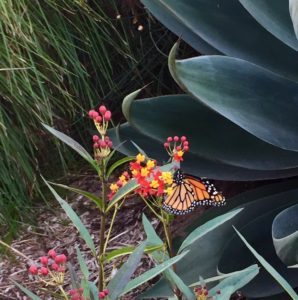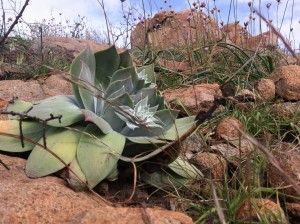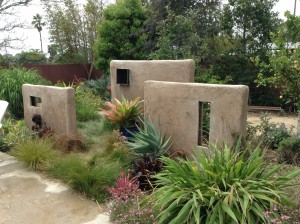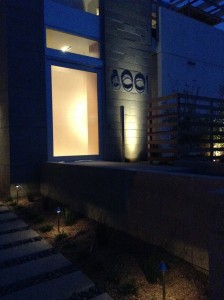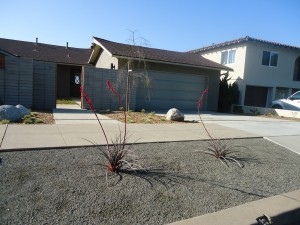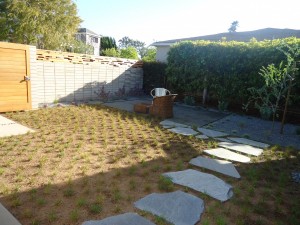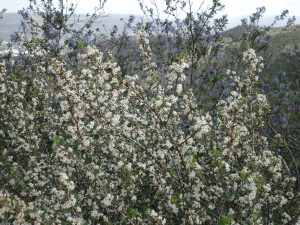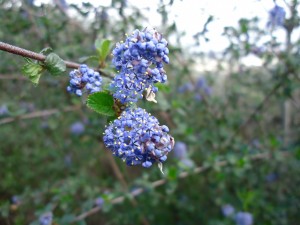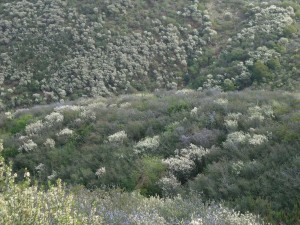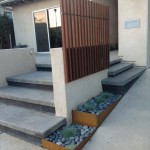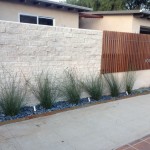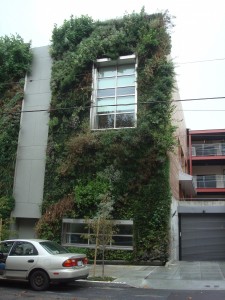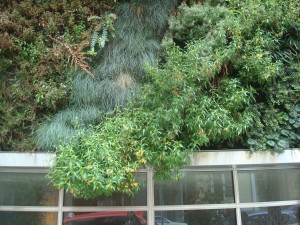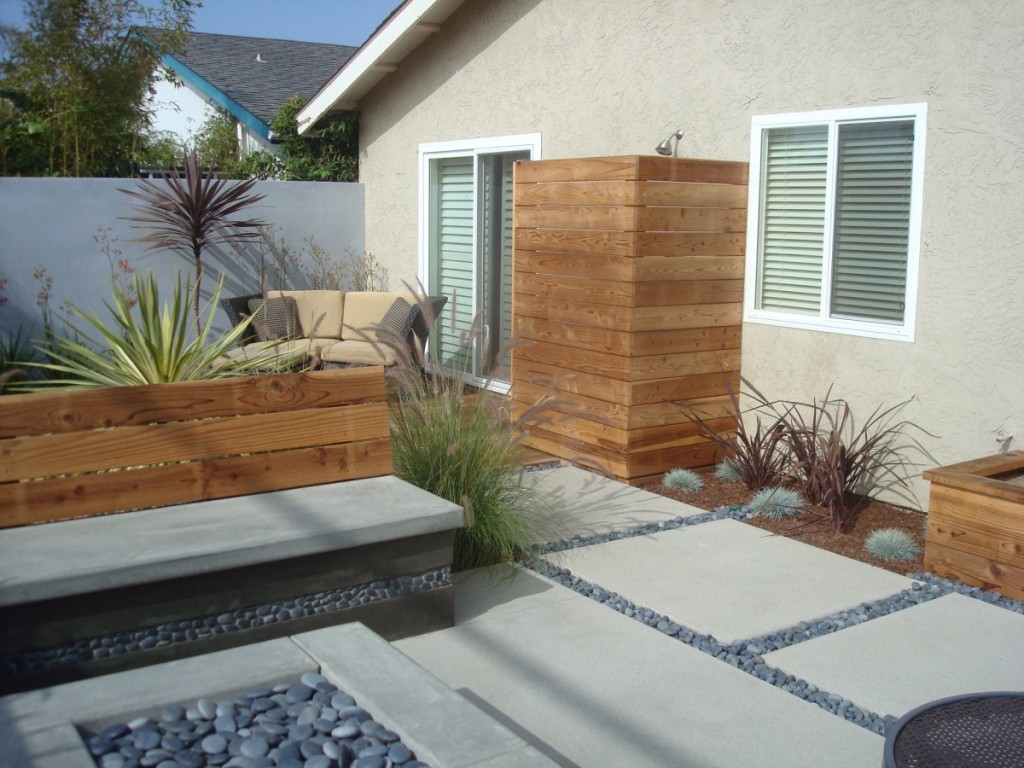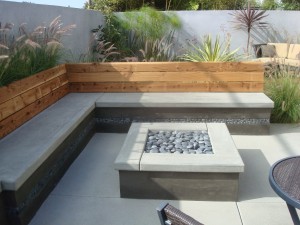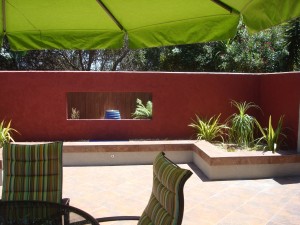
Clean lines and bold colors made this University City remodel work.
I’ve recently had run of requests for landscapes to complement modern architecture, and thought I’d share some photos and thoughts on the subject. I’ve had the pleasure of working on recent projects designed by talented architects including Architects Magnus, Domus Sudio, and Sanctuary Architects. I certainly appreciate the clean lines and simplicity of modern architecture, but sometimes it just feels a little to cold and hard for my personal taste. I believe that you can achieve lots of variety and color through plant selection which and can bring to life some of those modern spaces that feel hard, cold and dead.
I think there are sensible lessons that can be drawn from the modern style and applied generally to all landscape endeavors. Keeping paved surfaces simple, clean and neutral is just good planning. I believe the design of hard surfaces should be conservative. Done well, they should last for many decades and endure through changes of taste and style. Overbuilt, complicated outdoor kitchens with multiple appliances and fire pits with faux finishes were never my thing. I’ve already seen a number of them look dated. I believe in the near future they’ll be considered the landscape equivalent of the humvee. Cooking and eating outdoors is a fantastic idea, but the design response should be kept simple, flexible, efficient and clean. If you want to get wild and creative in your landscape do with your plantings, not with constructed elements.
I love concrete, stucco and steel. They seem to be the materials of choice for modern landscapes. Natural materials have a more organic feel and lend themselves to naturalistic shapes, but talented designers and architects can do a great job of blending natural materials with clean modern lines.
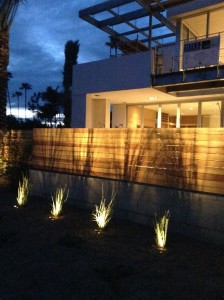
Cape Rushes make great linear shadows on the fence of this Domus Studio designed house.
When it comes to planting design the best plants to complement modern architecture are textural and linear in nature. Each plant has it’s own architecture and character that can complement the built elements. Grasses and grass like plants work especially well. The cape rush (Chondropetalum tectorum) is one of my favorites. Succulents such as Dasylirion and Agave work well too. I tend to avoid billowy rounded perennials and shrubs for modern applications. However, linearity has it limits, I do not recommend trying to create lines or geometric shapes with plants! Plants are living, variable and irregular. Attempts at geometry and symmetry with living materials are difficult and fraught with failure. The loss of a single plant in a long linear arrangement ruins the entire effect, and instant replacement is usually impossible.
I’ve attached some pictures below from my recent projects that I think are relevant to the discussion. Enjoy!
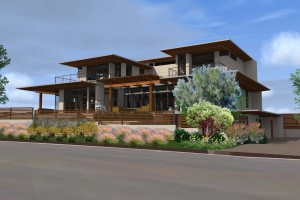
Sweeps of grasses, succulents and native plants are shown against the architects rendering of this Del Mar house designed by Sanctuary Architects that’s now under construction.
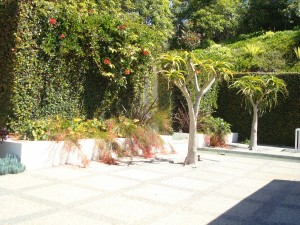
- Specimen tree Aloes make a statement in this La Jolla courtyard garden.
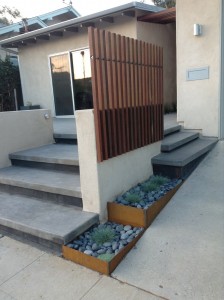
The warmth of rust and wood balance out the hard lines of concrete in this Mission Hills project.
